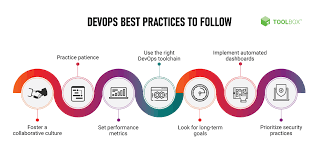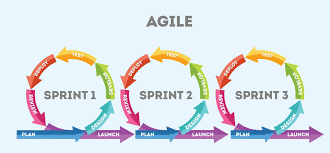Optimizing Software Development: The Power of DevOps in SDLC
The Role of DevOps in the Software Development Life Cycle (SDLC)
DevOps, a combination of “development” and “operations,” is a software development methodology that emphasizes collaboration and communication between software developers and IT operations professionals. When integrated into the Software Development Life Cycle (SDLC), DevOps can streamline the development process, improve efficiency, and enhance product quality.
Key Components of DevOps in SDLC:
Continuous Integration (CI): CI involves automatically integrating code changes into a shared repository multiple times a day. This practice helps identify and fix integration issues early in the development process.
Continuous Delivery (CD): CD focuses on automating the deployment process to deliver code changes to production quickly and reliably. It ensures that software is always in a deployable state.
Infrastructure as Code (IaC): IaC involves managing infrastructure through code and automation tools. It allows for consistent provisioning of environments, reducing manual errors and improving scalability.
Monitoring and Logging: Monitoring tools provide insights into system performance, while logging helps track events and troubleshoot issues. These practices are essential for maintaining system health and reliability.
Benefits of Integrating DevOps into SDLC:
Faster Time-to-Market: By automating processes and improving collaboration, DevOps accelerates development cycles, allowing organizations to release products faster.
Improved Quality: Continuous testing and integration help catch bugs early, leading to higher-quality software releases with fewer defects.
Enhanced Collaboration: DevOps promotes cross-functional teamwork, breaking down silos between development, operations, and other teams. This collaboration fosters innovation and efficiency.
Better Scalability: With IaC and automation, organizations can easily scale their infrastructure based on demand without manual intervention. This flexibility enables rapid growth without compromising stability.
In Conclusion
Integrating DevOps practices into the SDLC is crucial for modern software development teams looking to stay competitive in today’s fast-paced market. By embracing automation, collaboration, and continuous improvement, organizations can deliver high-quality products efficiently while meeting customer demands effectively.
6 Essential DevOps SDLC Tips for Streamlining Efficiency and Security
- Automate repetitive tasks to increase efficiency.
- Implement continuous integration and continuous deployment practices.
- Use version control systems to track changes in code and configurations.
- Monitor application performance and infrastructure health regularly.
- Encourage collaboration between development and operations teams.
- Prioritize security measures throughout the software development lifecycle.
Automate repetitive tasks to increase efficiency.
Automating repetitive tasks is a key tip in DevOps SDLC to boost efficiency and productivity. By leveraging automation tools and scripts, teams can streamline routine processes, such as testing, deployment, and monitoring, saving valuable time and reducing the risk of human error. This allows developers and operations professionals to focus on more strategic tasks, innovation, and problem-solving, ultimately accelerating the software development lifecycle and improving overall project outcomes.
Implement continuous integration and continuous deployment practices.
Implementing continuous integration and continuous deployment practices in DevOps SDLC is essential for streamlining the software development process. Continuous integration involves automatically integrating code changes into a shared repository multiple times a day, facilitating early detection and resolution of integration issues. On the other hand, continuous deployment focuses on automating the deployment process to deliver code changes to production swiftly and reliably. By adopting these practices, development teams can enhance collaboration, improve efficiency, and ensure that software is always in a deployable state, ultimately leading to faster time-to-market and higher-quality product releases.
Use version control systems to track changes in code and configurations.
In DevOps SDLC, it is essential to utilize version control systems to monitor and manage changes in code and configurations effectively. Version control systems, such as Git or SVN, allow developers to track modifications, collaborate seamlessly, revert to previous versions if needed, and maintain a clear history of changes. By implementing robust version control practices, teams can ensure consistency, traceability, and reliability throughout the software development process.
Monitor application performance and infrastructure health regularly.
Monitoring application performance and infrastructure health regularly is a critical aspect of implementing DevOps practices in the Software Development Life Cycle (SDLC). By continuously monitoring these key metrics, teams can identify potential issues early, ensure optimal system performance, and proactively address any anomalies that may impact the overall quality of the software. This proactive approach not only helps in maintaining a stable and reliable environment but also enables teams to make data-driven decisions to improve efficiency and enhance the end-user experience.
Encourage collaboration between development and operations teams.
Encouraging collaboration between development and operations teams is a key tip in implementing DevOps practices within the Software Development Life Cycle (SDLC). By fostering open communication and teamwork between these traditionally siloed departments, organizations can streamline processes, improve efficiency, and enhance the overall quality of software releases. When developers and operations professionals work together closely, they can better understand each other’s needs and challenges, leading to faster problem-solving, smoother deployments, and ultimately, more successful outcomes for the entire project.
Prioritize security measures throughout the software development lifecycle.
It is essential to prioritize security measures throughout the software development lifecycle when implementing DevOps practices. By integrating security from the initial stages of development, teams can identify and address vulnerabilities early on, reducing the risk of potential security breaches. This proactive approach ensures that security is not an afterthought but a fundamental aspect of the entire development process, leading to more secure and resilient software products.







